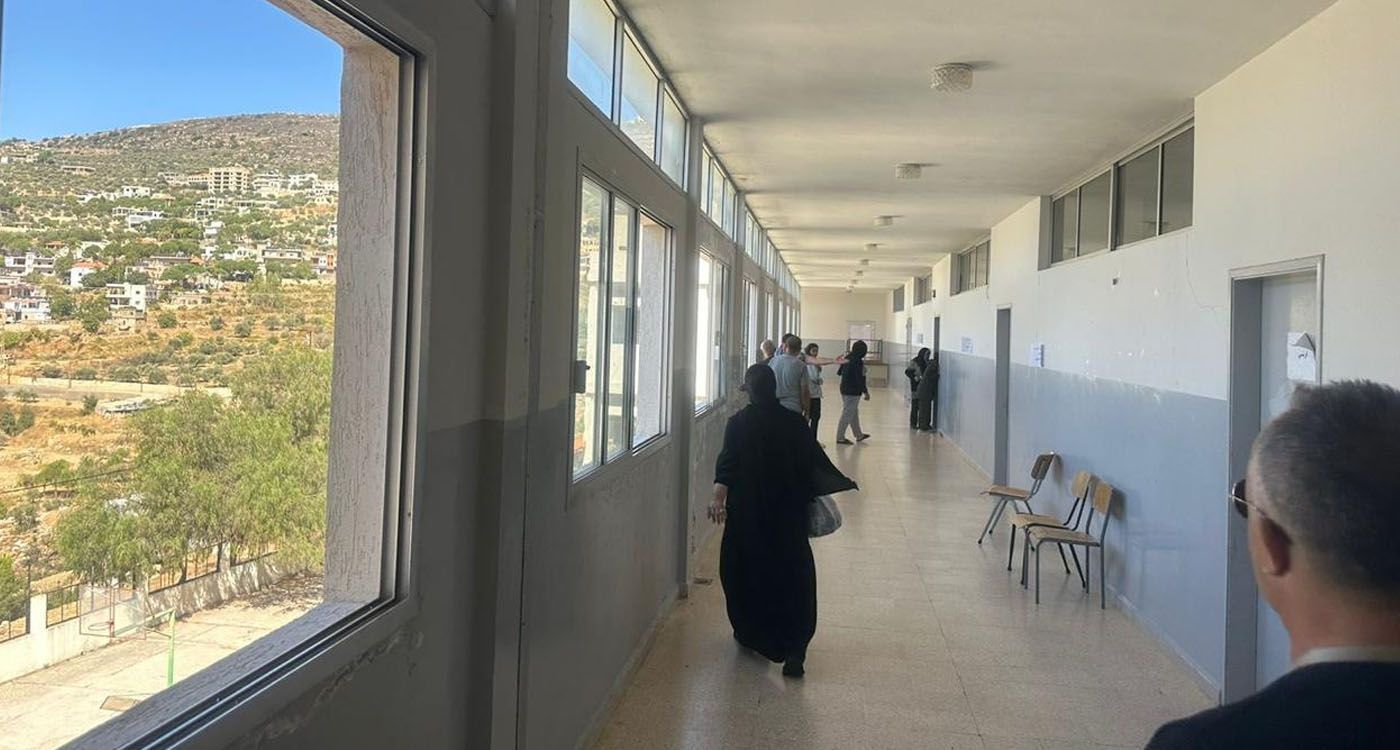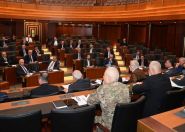
“I lived through the 2006 war, and I can say this one is far worse. We left with nothing,” sighs Rana, a displaced person from Marjayoun.
On September 23, the situation in Southern Lebanon, marked by artillery exchanges between Israel and Hezbollah since October 8, 2023, took a significant turn after an escalation declared by Tel Aviv. An urgent phone call from Israeli authorities sent shockwaves through Marjayoun and neighboring villages (Ebel Saqi, Khiam, Kfarchouba, Shebaa, etc.), forcing many residents to abandon their homes in a hurry, leaving everything behind. They had just received orders to evacuate their villages in anticipation of an offensive set to be launched three days later. This warning sparked a substantial exodus toward Hasbaya village, the main locality in the Hasbaya district.
This neighboring locality, situated just a few kilometers from the Marjayoun district, has swiftly become a refuge for thousands of displaced individuals, all united by a common hope: to return home as soon as possible.
“We fervently wish for the war to end so we can go back to our houses,” says Albert, a resident of Marjayoun. His wife, Simona, recalls what she describes as “the worst hours of her life.” “I hid at home when my husband received a call from someone advising us to steer clear of Hezbollah’s weapon caches and rocket launch sites. We were at a loss about what to do, and ultimately, we left without taking anything with us,” she recounts, tears welling in her eyes.
Lama has just one desire: “To find solid shelter so we can feel somewhat safe.” Currently, she and her family are living in a makeshift tent in a garden.
As Israeli surveillance drones hum overhead, this 30-year-old woman reflects on the night she spent with her husband and two children in their car parked in Place du Sérail in Hasbaya. “We could hear explosions in Khiam and across the Marjayoun plain. The children were terrified. Then it started to rain. What will we do if the rainy season begins? This is real suffering,” she laments.
Under the awning of a public school that has quickly been transformed into a reception center, Abou Jawad, his face lined with age, struggles to regain his composure as he sits on a bench alongside newly arrived families. They share their stories, and nearly all have endured the same nightmare. Dispossessed, these men, women, and the elderly cling to a shared hope that this turmoil will come to an end.
In one classroom, a woman sweeps the dusty floor. In another, men sit on worn chairs, gazing out of windows that overlook the courtyard. Nearby, children play loudly near their mothers.
In a worn-out small room at the public high school in Hasbaya, Youssef, a farmer from Sarada—a village just a few kilometers from the border—scrolls through photos on his mobile phone. Treasured memories of joyful days spent with his family, his dog, and his livestock. In the next images, all the animals are gone. “A bombing damaged our home and killed our livestock. The farm and surrounding fields were also hit. It will take at least ten years for me to restore my pre-war production,” he laments, lighting his fifth cigarette.
A Series of Challenges
The sudden influx of a large number of displaced people has severely strained the local infrastructure of this huge village. The homes or shelters provided often lack the basic conditions necessary for a dignified life. Arriving with few possessions and often carrying deep emotional trauma, the displaced find themselves living in precarious conditions.
Many have rented small houses despite their limited financial resources. While the rentals may be relatively affordable, they still pose a significant burden for families who have lost their sources of income. Others have taken refuge in schools due to lesser means, where classrooms are overcrowded, and privacy is nearly impossible to maintain. Hygiene and comfort are often inadequate, adding to the stress and anxiety faced by displaced persons. Electricity supply is unreliable, and access to clean drinking water is extremely limited.
“We wait in line for hours to fill our water containers, and over time, this could lead to serious health issues,” worries Fatima, a housewife. Rami, a teenager, adds, “We often don’t have enough water to wash our hands, which is particularly concerning with so many illnesses spreading.”
In these overcrowded spaces, where the lack of privacy exacerbates an already difficult situation, large families are forced to share insufficient sanitation facilities. Local associations strive to provide support, but as Sheikh Sami, a member of an NGO in Hasbaya, notes, “The needs far exceed the available resources.”
The municipality of Hasbaya plays a crucial role in addressing the crisis, initiating several programs to support families in distress. “We have nearly 20,000 registrations of displaced individuals,” explains the President of the Municipal Council, Labib Hamra.
Adjacent to his office, which is cluttered with phones, computers, and files, a team of about ten volunteers welcomes displaced individuals, registers them, and issues a number that allows them to collect food aid.
The municipality has mobilized resources to deliver emergency assistance, including food, clothing, and essential supplies. Regular distribution events are organized to ensure that the basic needs of the displaced are met. “We strive to offer them a measure of comfort. Each face brightened with a smile is a testament to our success,” asserts Labib Hamra, emphasizing the importance of “sustained efforts to address this humanitarian crisis and create an environment where everyone can live with dignity.”
Citizen Initiatives
Civil society has also stepped up to address the crisis. The sisters of the Saydnaya convent have launched a series of initiatives aimed at meeting the needs of those affected by the conflict, including the installation of prefabricated homes that provide temporary yet decent shelter.
Thanks to generous donations and partnerships with various organizations, the convent has successfully welcomed several displaced families. “Every day, we receive new families. Our mission is to surround them with warmth and compassion. We do everything we can to restore their hope,” says Mother Fabronia Nabhan, the convent’s Superior.
The municipality partners with associations such as the Lebanese Red Cross and Support for Humanitarian Implementation and Evidence for Local Development (SHIELD) under the United Nations High Commissioner for Refugees (UNHCR) to develop support initiatives. However, NGOs are also overwhelmed, as the needs far exceed the available resources, with access to drinkable water and economic challenges at the forefront of concerns. “We need more funding and supplies to meet the growing demand. The needs are immense,” stresses a volunteer.
Individual initiatives have also emerged, primarily led by local teachers or villagers. After-school activities and support groups have been established to facilitate the integration of displaced children.
“Our team tirelessly works to provide psychological support to children. We strive to create a secure and welcoming environment, but there is still much to be done,” says Rania, a volunteer with a local NGO.
Residents of Hasbaya have opened their homes to families in need. One woman from the village has started organizing support classes for displaced children, stating, “These little ones need human warmth and a sense of normalcy in their lives,” while emphasizing that her efforts are “just the bare minimum.”
However, some newly established NGOs responding to the humanitarian crisis have faced criticism for their approach, particularly when they solely focus on cataloging displaced individuals and collecting their data without providing the essential assistance needed. This practice raises questions and breeds frustration within the displaced community.




Comments